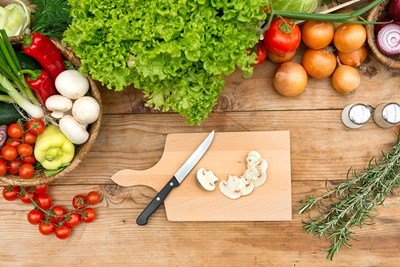Studies have shown that the majority of Americans consume significantly more than the recommended 1,500 to 2,300 milligrams of salt per day. Table salt contains sodium, which can lead to hypertension, heart disease, and osteoporosis if eaten in excess. Reducing the sodium in your diet doesn’t mean you have to sacrifice on flavor, so here are 10 tips you can use to limit the amount of sodium in your diet.
- Marinate, marinate, marinate.
Marinating your meats in spices, oils, and sauces is an easy way to give your food an instant and intense burst of flavor. The longer the marinade has to soak into the meat, the better it will taste, but you can marinate for anywhere from 30 minutes to overnight. Try marinating chicken in chili powder, garlic powder, onion powder, and lime juice for a Mexican twist. Marinate your steak in olive oil, lemon juice, dried basil, pepper, and dried parsley for a delectable flavor. - Add some spice.
If you add enough heat to your food, you probably won’t even notice the lack of salt. Instead of loading up your popcorn with salt and butter, op it off with some freshly cracked black pepper, paprika, garlic powder, and smoked paprika. - Freshen up.
Fresh foods naturally have less sodium than processed ones, so try to avoid foods like lunch meat, frozen dinners, canned food, processed cheese products, chips, and crackers. Buy fresh and it will taste better along with being better for you. - Use herbs.
Both fresh and dried herbs pack a punch of flavor, and you don’t need to add much to achieve that flavor. Add fresh tarragon or rosemary to your sauces to infuse that flavor into them, and load up your other dishes, like baked chicken, with dried basil, thyme, and parsley. - Make your own condiments.
Even if you grill burgers yourself with very little sodium, adding store-bought ketchup or mustard can take your sodium levels through the roof. These condiments are actually easier to make at home than you think, and you’ll have peace of mind knowing exactly what’s in them. - Make substitutions.
You don’t have to follow a recipe exactly to make it taste good, so the next time a recipe calls for a pinch of salt, substitute with curry powder, dried ginger, cayenne pepper, ground mustard, onion powder, or cumin. - Rinse canned foods.
If nothing other than canned black beans will do for your burrito bowl recipe, at least rinse them off before you add them to your dish. The liquid in the can is packed with sodium, so by simply rinsing the beans off, you can eliminate a lot of it. - Eat naturally low-sodium foods.
Fresh produce and whole-grain pastas and breads are low in sodium, so include these in your diet as much as possible. When it comes to meat, choose fresh beef, lamb, poultry, or fish. - Cook low and slow.
Using a slow cooker draws significantly more flavor out of your food than if you only spend 15-20 minutes preparing your meal. You can cook anything from ribs to buffalo wings in a slow cooker and you can enjoy a ton of flavor without having to pour on the sodium. - Grill or smoke.
Cooking your meats over a charcoal grill or in a smoker gives your food a smoky flavor that simply cannot be matched. Because this cooking method provides so much flavor combined with other herbs and spices, you will not miss the salt.



